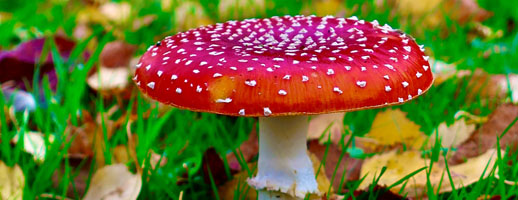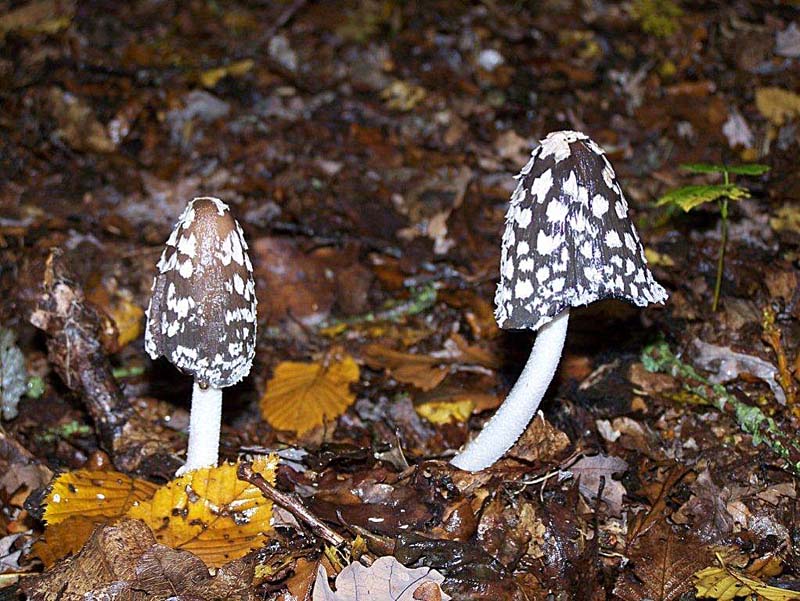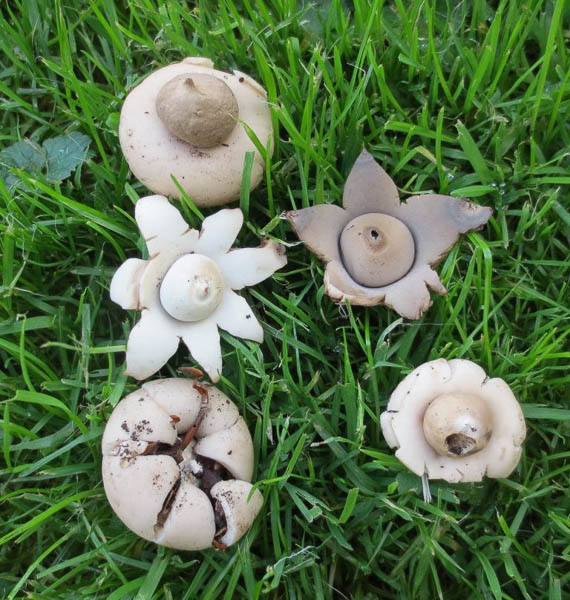Photographs
Click on small images for more details

Taphrina alni, Taphrina alni. Alder Tongue, an interesting fungal gall found recently (August 2012) on alder trees in the Lye Valley by Judy Webb. Growths emerge green, turn yellow then flame red and then go brown, red tongues very distinctive.
Taphrina alni Photo: ©Judy Webb
Boletus appendiculatus, pores bright lemon yellow, good for the pot but a rare species in the Oxford area.
Boletus appendiculatus Photo: ©Alan Hills
Agaricus bresadolanus uncommon, looks like the common edible mushroom but is distinguished by prominent white branching rhizomorphs at the base of the stipe, Eynsham.
Agaricus bresadolanus Photo: ©Max Peterson

Melanophyllum haematospermum. This uncommon fungus is the only British fungus with red spores!
Melanophyllum haematospermum Photo: ©Joanna Dodsworth

Cyathus olla, Birds nest fungus, very small, 1 cm diam,
on bark chippings, Albert Park, Abingdon, late October.
Cyathus olla Photo: ©Molly Dewey

Helvella crispa, White Saddle fungus, found growing
through gravel in a driveway.
Helvella crispa Photo: ©Molly Dewey

Phylloporia (Phellinus) ribis, uncommon
bracket fungus, base of old spindle tree on chalk grassland.
Phylloporia (Phellinus) ribis Photo: ©Judy Webb
Geopora sumneriana, found by Judy Webb, 21 March
2012, poking out of soil on edge of footpath at junction of Girdlestone Road and Old
Road in Headington nr Churchill hospital.
Geopora sumneriana Photo: ©Judy Webb
Amanita muscaria, common name Fly Agaric. Common
under birch, poisonous and hallucinogenic. Kennington 2011.
Amanita muscaria Photo: ©Molly Dewey
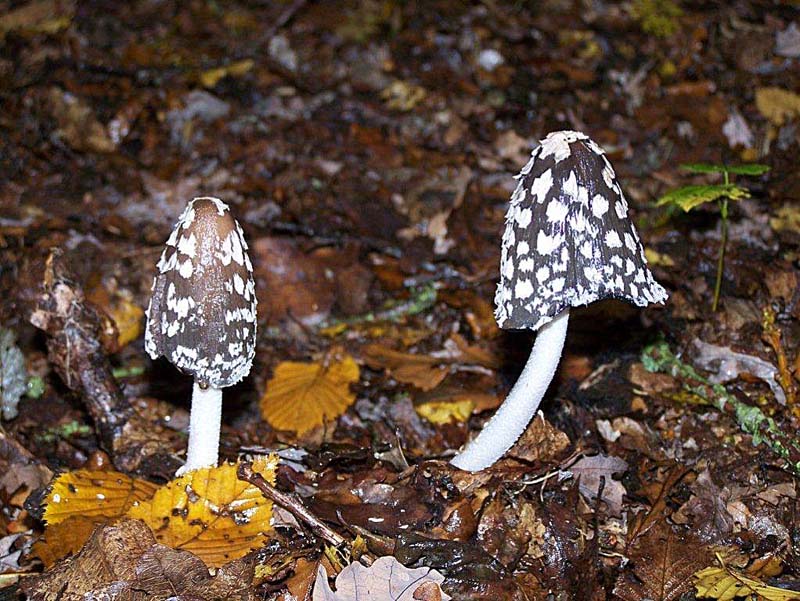
Coprinopsis picacea, common name Magpie Inkcap. Found
in leaf litter in woodland, Kennington, 2009.
Coprinopsis picacea Photo: ©Joyce Gibbard

Calocybe gambosa, St George's mushroom.
Kennington in grass under ash and oak. Commonly found each year around St Georges Day,
April 23.
Calocybe gambosa Photo: ©Molly Dewey

Limacella ochraceolutea, an extremely slimy
orange-capped toadstool discovered by Judy Webb in July in leaf litter on the edge of
the fen at Cothill NNR (Ruskin Reserve). First record in Oxfordshire.
Limacella ochraceolutea Photo: ©Judy Webb
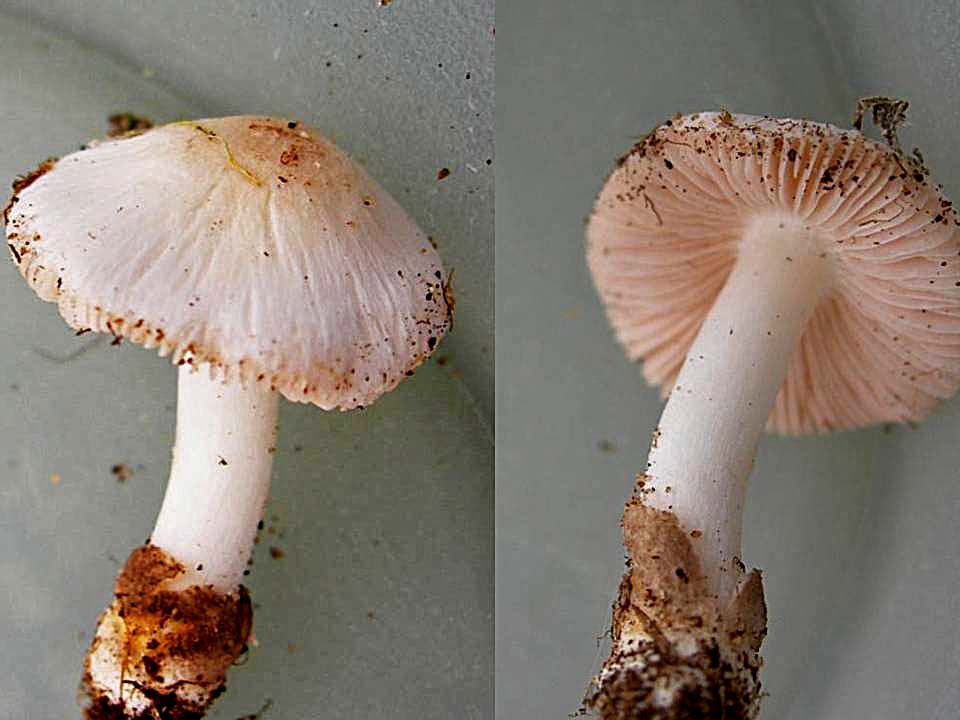
Volvariella pusilla, a pretty little toadstool
with gills that are initially white but turn shell pink when taken home. Note the
volva at the base. Found by Richard Fortey, Blackhorse Fields September 2011.
Volvariella pusilla Photo: ©Judy Webb

Cristulariella depraedens, brown spots seen
on sycamore leaves for the first time in many woods in Oxon in 2012 together with the
familiar black spots of Rhytisma acerinum.
Cristulariella depraedens Photo: ©Molley Dewey

Geastrum triplex, The Collared Earth Star, found
under Beech at Aston Rowant Survey, 7 October, 2012. Often, a layer of the exoperidium
splits around the perimeter of the spore sac so that it appears to rest in a collar or
saucer around the spore sac.
Geastrum triplex Photo: ©Judy Webb
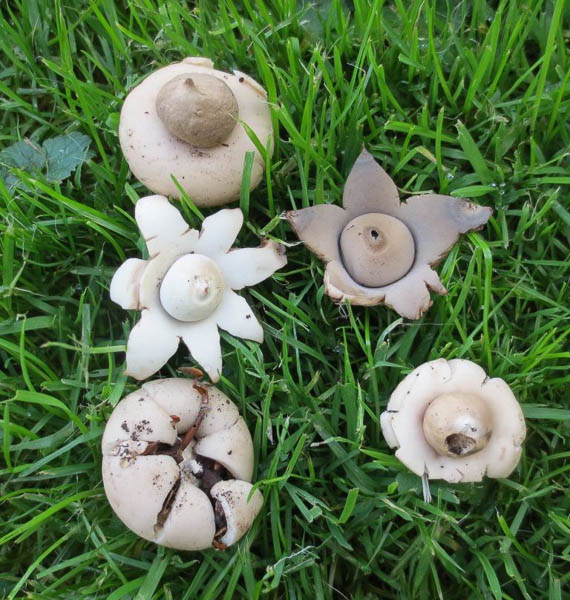
Geastrum fimbriatum, The Sessile Earth Star,found
under Beech at Aston Rowant Survey 7 October, 2012.
Geastrum fimbriatum Photo: ©Judy Webb

Volvariella surrecta, This very rare fungus was
found growing on top of Clitocybe nebularis by Richard Fortey, late October 2012, near
Lambridge Woods, Henley on Thames.
Volvariella surrecta Photo: ©Richard Fortey
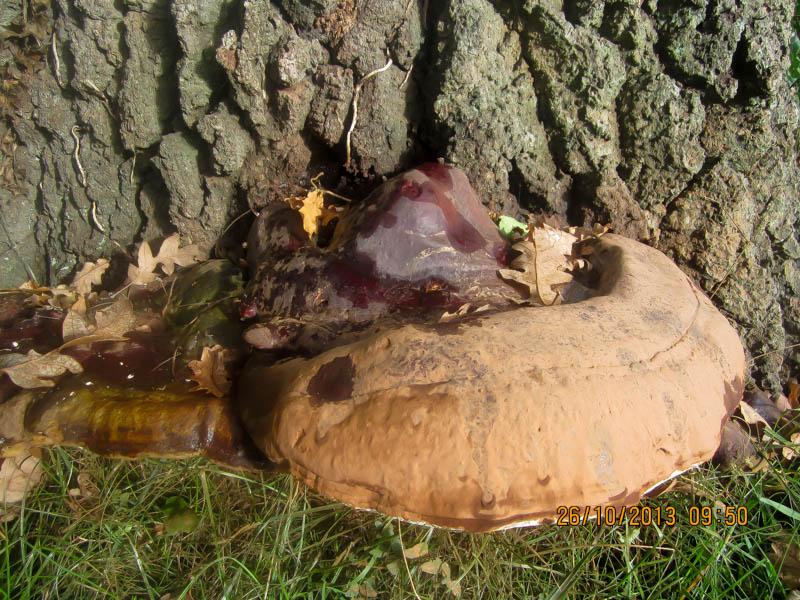
Ganoderma resinaceum, A large (approx 40cm),
relatively rare species of Ganoderma found at the base of a mature oak tree on
property adjacent to Bagley Wood. Distinguished from the more common species,
Ganoderma lucidum, by lack of a marked stem.
Ganoderma resinaceum Photo: ©Molly Dewey


Stropharia aruginosa, the Verdigris Agaric, found
both at the Warburg Reserve, under Beech on October 26 and again in Bagley Wood under
oak, Nov.17, 2013. Blue to blue-green flecked with white scales, poisonous.
Photos:©Molly Dewey

Rhodotus palmatus, sometimes called the Wrinkled
Peach because of the obvious wrinkles and peach/apricot colour when young. Found at
the Warburg Reserve, October 26, 2013 on Dead Elm wood.
Rhodotus palmatus Photo: ©Molly Dewey

Amanita muscaria, design and stitchwork by
Caroline Jackson-Houlston. A contribution to the patch work quilt made by members of
Plant Life to foster interest in Wild Flowers and Fungi.
Amanita muscaria Photo: ©Caroline Jackson-Houlston

Armillaria gallica, the bulbous Honey fungus,
darker and smaller than other species of Armillaria and distinguished by the
bulbous base to the stipe. Uncommon in Britain. Found by Judy Webb, Nov 13, 2013, in
Bagley Wood.
Armillaria gallica Photo: ©Judy Webb
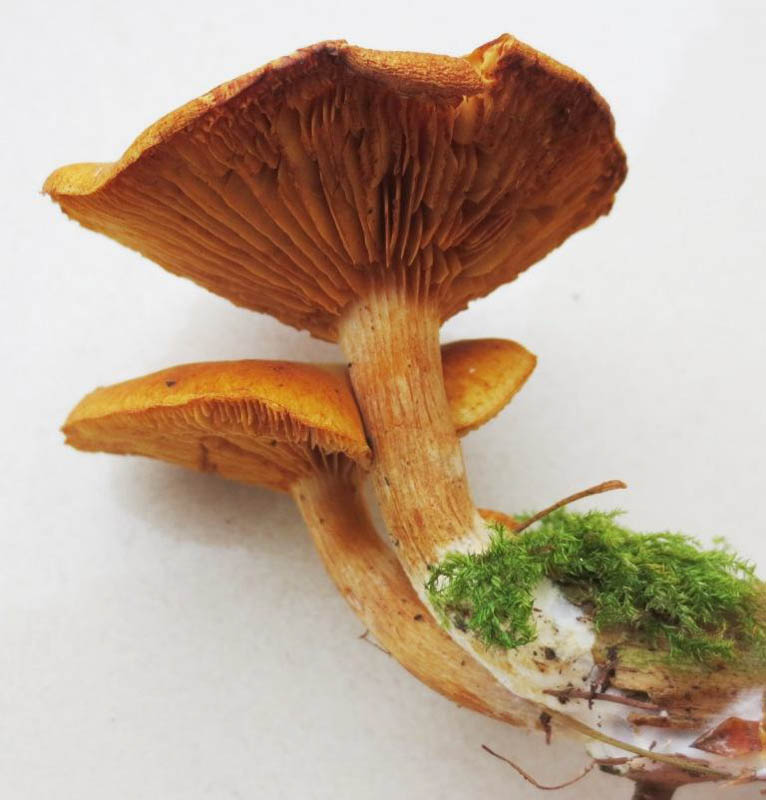
Gymnopilus penetrans, Common Rust Gill fungus,
found by Judy Webb, Nov 13, 2013 in Bagley Wood on rotting logs and fallen branches
under Pine.
Gymnopilus penetrans Photo: ©Judy Webb
Lepiota felina, Speckled Daperling. An uncommon,
attractive little fungus, found in Bagley Wood, under conifers, by Judy Webb, November
13, 2013.
Lepiota felina Photo: ©Judy Webb

Scutellina sp. The Eyelash fungus, so called because of the
hairs surrounding the cup of this little fungus which is an Ascomycete. Usually found
on damp wood or damp soil. This one, was found by Judy Webb's son on the upper
surface of the trunk of a fallen Ash tree in the garden of Molly Dewey, March 3, 2007.
Scutellina sp. Photo: ©Judy Webb
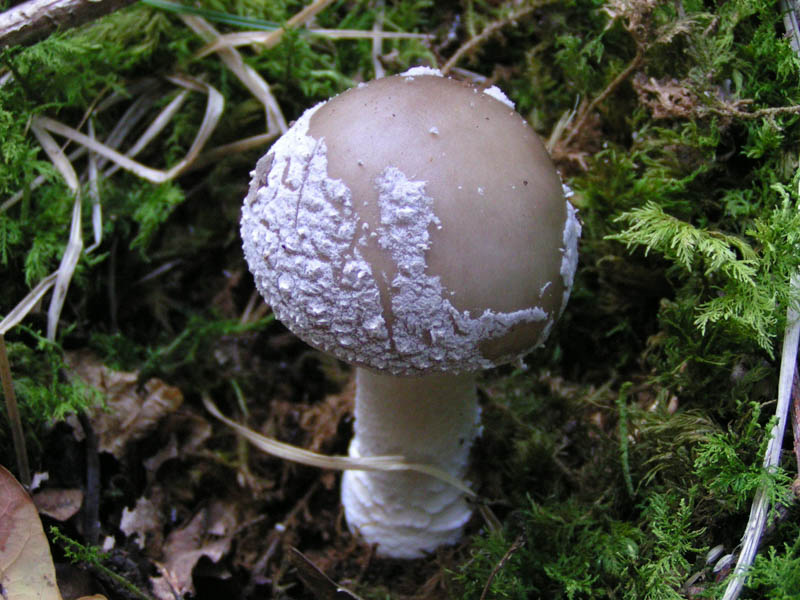
Amanita pantherina ( Panther cap)
Found in mixed woodlands, dangerous-toxic but not usually fatal, Sodium hydroxide turns the cap yellow.
Amanita pantherina Photo: ©John Woolliams

Fomes fomentarius (Hoof fungus or Tinder bracket)
Associated with deciduous trees commonly on beech in S. England and Birch in Scotland. Underside cream with rounded pores.
Fomes fomentarius Photo: ©John Woolliams

Hygrocybe cantherellus (Goblet Waxcap) small, reddish or orange waxcap with dry scurfy cap, found in unimproved grassland.
Hygrocybe cantharellus Photo: ©John Woolliams

Gliophorus psittacina (Parrot waxcap) Extremely variable in colour but green tint almost always present. Widespread and common in unimproved grassland.
Gliophorus psittacina Photo: ©John Woolliams

Oudemansiella mucida (Porcelain fungus) in clusters on dying broad leaf trees predominantly on Beech. White glistening, mucoid caps.
Oudemansiella mucida Photo: ©John Woolliams
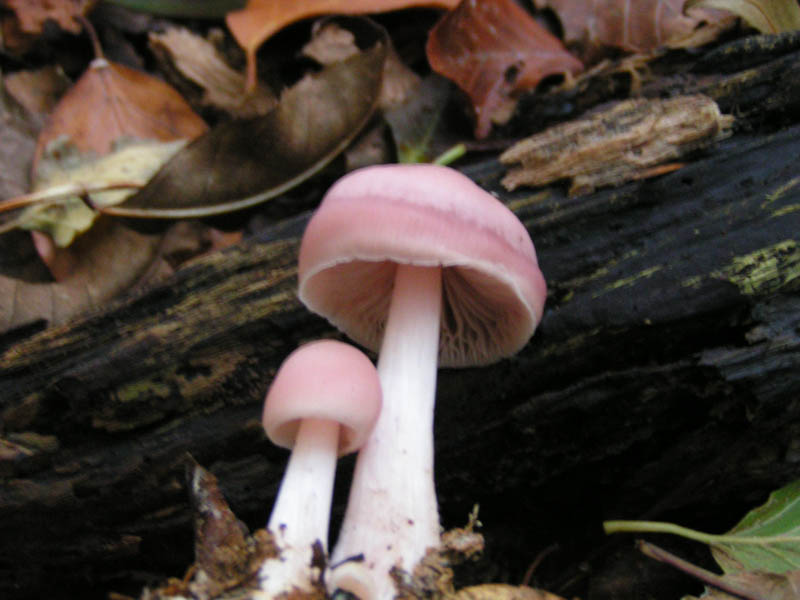
Mycena pura (Lilac bonnet) variable in size and colour lilac to pink with strong smell of raddish. Widespread and common.
Mycena pura Photo: ©John Woolliams

Chlorociboria aeruginascens (Green elf cup or greenwood)
Generally found on fallen, rotten branches of wood of oak. This species contains a quinone pigment called xylindein, which gives infected wood a characteristic bluish-green stain, it is used in Tunbridge ware.
Chlorociboria aeruginascens Photo: ©John Banham


Plicatura crispa found by Richard Fortey in Harpsden Wood on fallen branch of Cherry, Nov 5 2016. Essentially a Scottish fungus, only once reported south of York.
Upper surface
From below
Plicatura crispa Photo: ©Jackie Fortey

Hygrocybe calyptriformis (a.k.a. ballerina). A rare Hygrocybe (Wax cap) found by R.Fortey at the Maharajah's Well Stoke Row, mid November, 2016
Hygrocybe calyptriformis Photo: ©Jackie Fortey

.jpg)
Geastrum corollinus Small, rare (Red data listed species, new to Oxon) Earth Star known as the Weather Earthstar. It was found by Julia Huggins in a box grove (Buxus sempervirens) at Shirburn Hill on April 16 2016. It is closed when dry, when wet 6-10 star-lke rays of the outer layer uncurl and push against surrounding leaves raising the inner spore-filled sac above the surrounding debris.
Back to top


